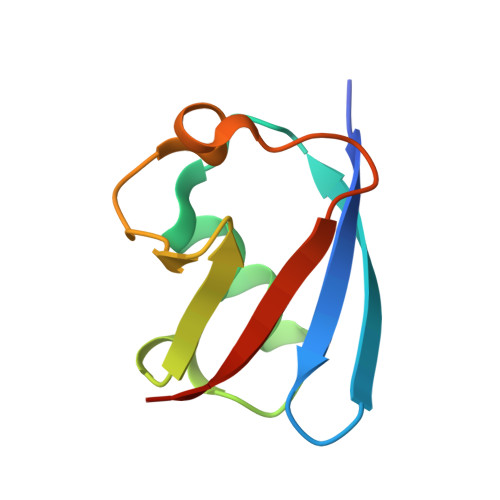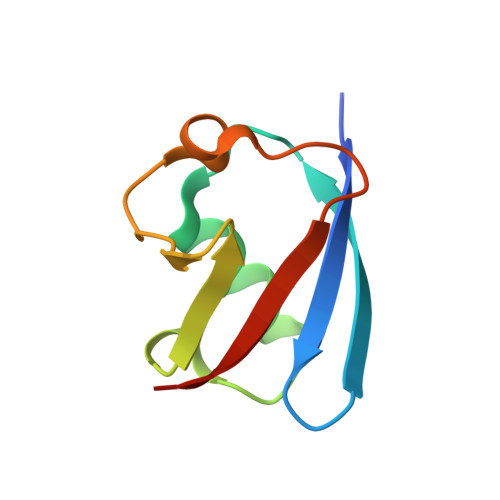The recognition of proteasomal receptors by Plasmodium falciparum DSK2.
Gupta, I., Khan, S.(2020) Mol Biochem Parasitol 236: 111266-111266
- PubMed: 32057831
- DOI: https://doi.org/10.1016/j.molbiopara.2020.111266
- Primary Citation of Related Structures:
6JL3 - PubMed Abstract:
One of the pathways by which proteins are targeted for degradation by the proteasome involve transport by shuttle proteins to proteasomal receptors. The malaria parasite Plasmodium falciparum has recently been found to possess a similar pathway, with the shuttle protein PfDsk2 being the major player. In this study, we have demonstrated how PfDsk2 and its recognition by proteasomal receptors differ from the mammalian system. Our crystal structure of unbound PfDsk2 UBL domain at 1.30 Å revealed an additional 3 10 -helix compared to the human homolog, as well as a few significant differences in its putative binding interface with the proteasome receptors, PfRpn10 and PfRpn13. Moreover, the non-binding face of UBL showed a reversal of surface charge compared to HsDsk2 shuttle protein, instead resembling HOIL-like E3 ligase UBL domain. The affinity of the interaction with the proteasomal receptors remained similar to the human system, and dissociation constants of the same order of magnitude. On the other hand, we have found evidence of a novel interaction between PfRpn13 DEUBAD with the PfDsk2 UBL suggesting that PfDsk2 may work in cooperation with deubiquitinating enzymes for proofreading ubiquitinated substrates. Our study provides the first molecular look at shuttle proteins in Apicomplexan parasites and hints at how their interaction landscape might be broader than what we may expect.
Organizational Affiliation:
Structural Immunology Group, International Centre for Genetic Engineering and Biotechnology, New Delhi, Delhi, India; Drug Discovery Research Centre, Translational Health Science and Technology Institute, NCR Biotech Science Cluster, 3rd Milestone, Gurgaon-Faridabad Expressway, Faridabad, Haryana, 121001, India.


















